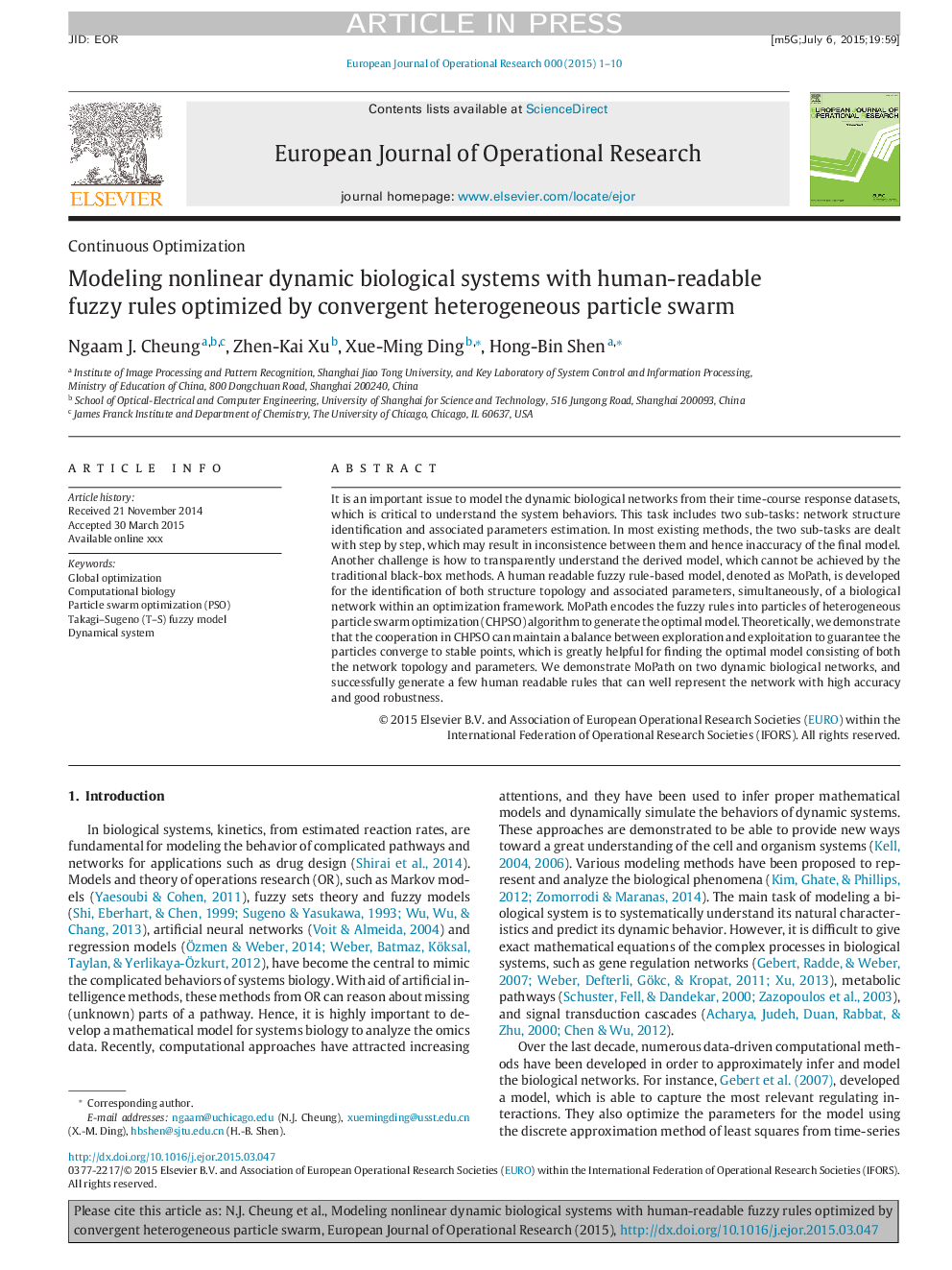| Article ID | Journal | Published Year | Pages | File Type |
|---|---|---|---|---|
| 6896357 | European Journal of Operational Research | 2015 | 10 Pages |
Abstract
It is an important issue to model the dynamic biological networks from their time-course response datasets, which is critical to understand the system behaviors. This task includes two sub-tasks: network structure identification and associated parameters estimation. In most existing methods, the two sub-tasks are dealt with step by step, which may result in inconsistence between them and hence inaccuracy of the final model. Another challenge is how to transparently understand the derived model, which cannot be achieved by the traditional black-box methods. A human readable fuzzy rule-based model, denoted as MoPath, is developed for the identification of both structure topology and associated parameters, simultaneously, of a biological network within an optimization framework. MoPath encodes the fuzzy rules into particles of heterogeneous particle swarm optimization (CHPSO) algorithm to generate the optimal model. Theoretically, we demonstrate that the cooperation in CHPSO can maintain a balance between exploration and exploitation to guarantee the particles converge to stable points, which is greatly helpful for finding the optimal model consisting of both the network topology and parameters. We demonstrate MoPath on two dynamic biological networks, and successfully generate a few human readable rules that can well represent the network with high accuracy and good robustness.
Keywords
Related Topics
Physical Sciences and Engineering
Computer Science
Computer Science (General)
Authors
Ngaam J. Cheung, Zhen-Kai Xu, Xue-Ming Ding, Hong-Bin Shen,
